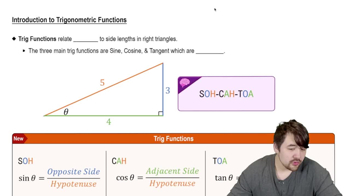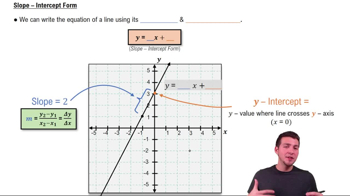Table of contents
- 0. Functions7h 52m
- Introduction to Functions16m
- Piecewise Functions10m
- Properties of Functions9m
- Common Functions1h 8m
- Transformations5m
- Combining Functions27m
- Exponent rules32m
- Exponential Functions28m
- Logarithmic Functions24m
- Properties of Logarithms34m
- Exponential & Logarithmic Equations35m
- Introduction to Trigonometric Functions38m
- Graphs of Trigonometric Functions44m
- Trigonometric Identities47m
- Inverse Trigonometric Functions48m
- 1. Limits and Continuity2h 2m
- 2. Intro to Derivatives1h 33m
- 3. Techniques of Differentiation3h 18m
- 4. Applications of Derivatives2h 38m
- 5. Graphical Applications of Derivatives6h 2m
- 6. Derivatives of Inverse, Exponential, & Logarithmic Functions2h 37m
- 7. Antiderivatives & Indefinite Integrals1h 26m
- 8. Definite Integrals4h 44m
- 9. Graphical Applications of Integrals2h 27m
- 10. Physics Applications of Integrals 2h 22m
1. Limits and Continuity
Finding Limits Algebraically
Problem 2.4.44
Textbook Question
Determine the following limits.
 Verified step by step guidance
Verified step by step guidance1
Step 1: Recognize that the expression \( \cos^2\theta - 1 \) can be rewritten using the Pythagorean identity \( \cos^2\theta = 1 - \sin^2\theta \). Therefore, \( \cos^2\theta - 1 = -(\sin^2\theta) \).
Step 2: Substitute \( \cos^2\theta - 1 \) with \( -\sin^2\theta \) in the limit expression. The limit now becomes \( \lim_{\theta \to 0^{-}} \frac{\sin\theta}{-\sin^2\theta} \).
Step 3: Simplify the expression by canceling one \( \sin\theta \) from the numerator and the denominator. This results in \( \lim_{\theta \to 0^{-}} \frac{1}{-\sin\theta} \).
Step 4: Evaluate the limit as \( \theta \to 0^{-} \). As \( \theta \) approaches 0 from the negative side, \( \sin\theta \) approaches 0 from the negative side, making \( \frac{1}{-\sin\theta} \) approach negative infinity.
Step 5: Conclude that the limit is \(-\infty\) as \( \theta \to 0^{-} \).
 Verified video answer for a similar problem:
Verified video answer for a similar problem:This video solution was recommended by our tutors as helpful for the problem above
Video duration:
3mPlay a video:
Was this helpful?
Key Concepts
Here are the essential concepts you must grasp in order to answer the question correctly.
Limits
Limits are fundamental in calculus, representing the value that a function approaches as the input approaches a certain point. In this case, we are examining the limit of a function as theta approaches 0 from the left (0-). Understanding limits is crucial for analyzing the behavior of functions near points of interest, especially when direct substitution may lead to indeterminate forms.
Recommended video:

One-Sided Limits
Trigonometric Functions
Trigonometric functions, such as sine and cosine, are periodic functions that relate angles to ratios of sides in right triangles. In this limit problem, the sine function appears in the numerator, while the cosine function is involved in the denominator. Familiarity with the properties and behaviors of these functions, particularly near key angles like 0, is essential for evaluating the limit accurately.
Recommended video:

Introduction to Trigonometric Functions
Indeterminate Forms
Indeterminate forms occur when direct substitution in a limit leads to expressions like 0/0 or ∞/∞, which do not provide clear information about the limit's value. In this problem, substituting theta = 0 results in the form 0/0, necessitating further analysis, such as algebraic manipulation or L'Hôpital's Rule, to resolve the limit and find the correct value.
Recommended video:
Guided course

Slope-Intercept Form

 5:21m
5:21mWatch next
Master Finding Limits by Direct Substitution with a bite sized video explanation from Callie
Start learningRelated Videos
Related Practice







